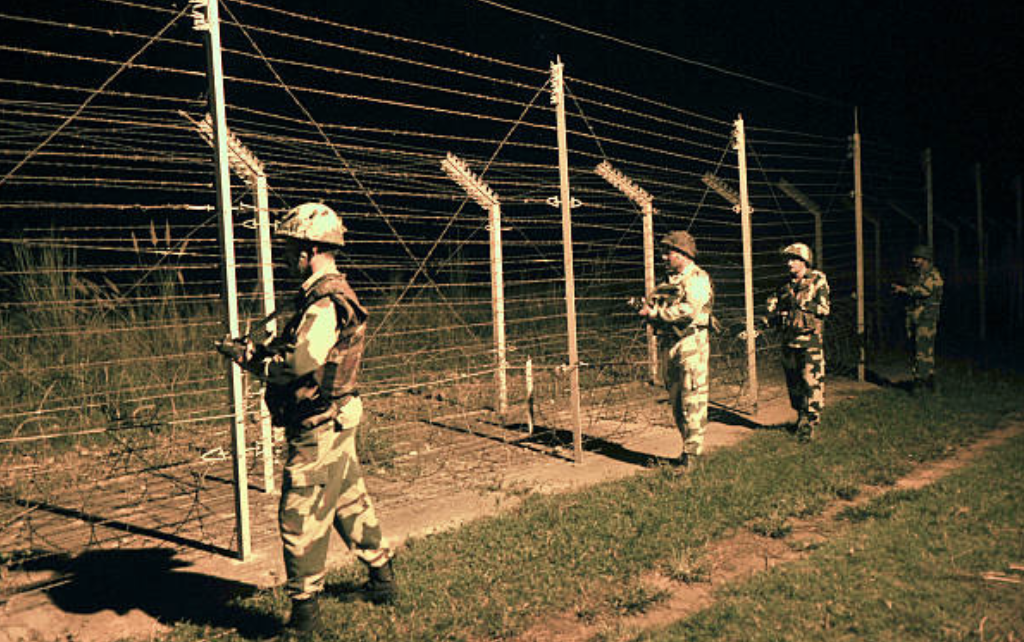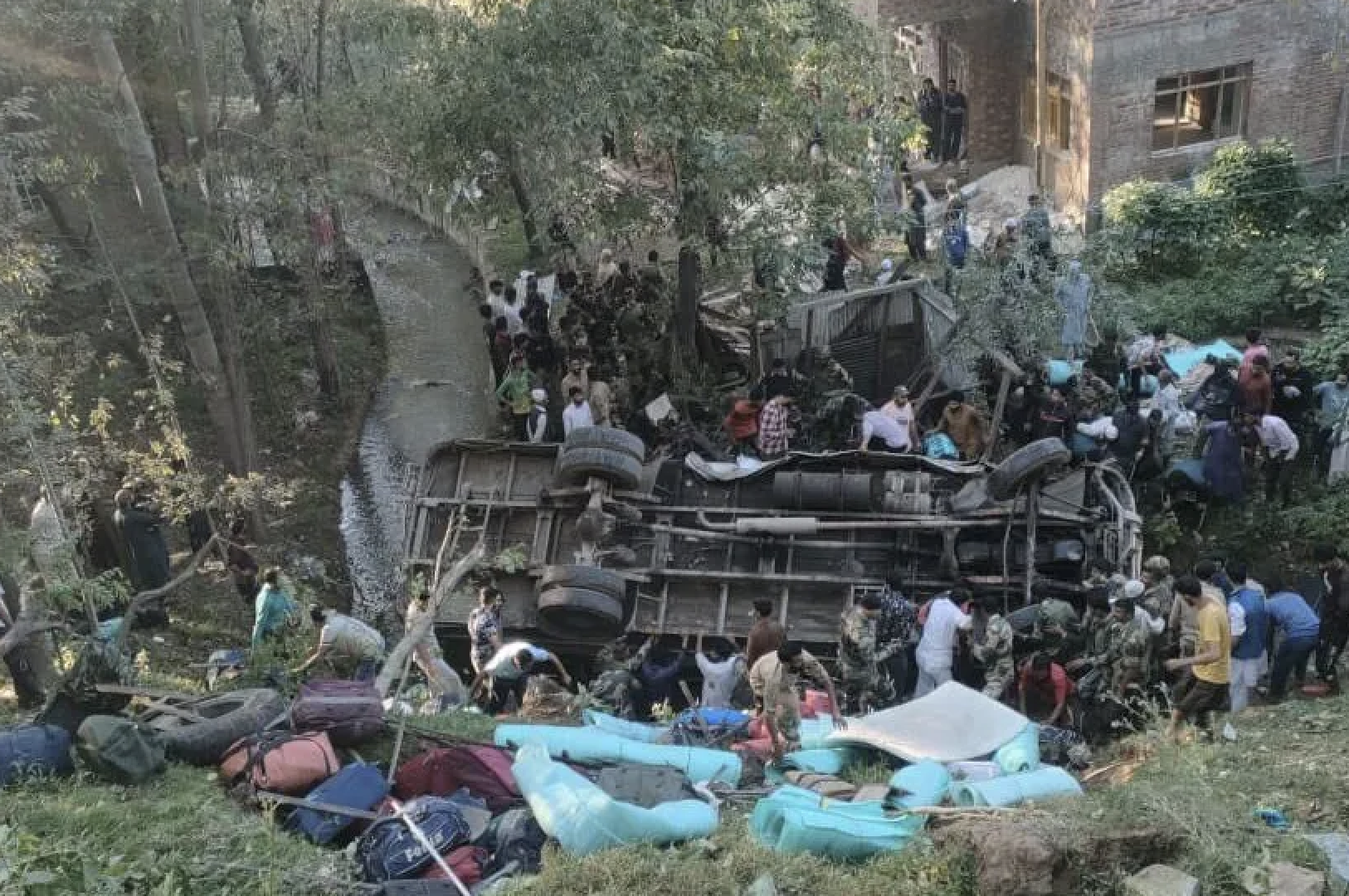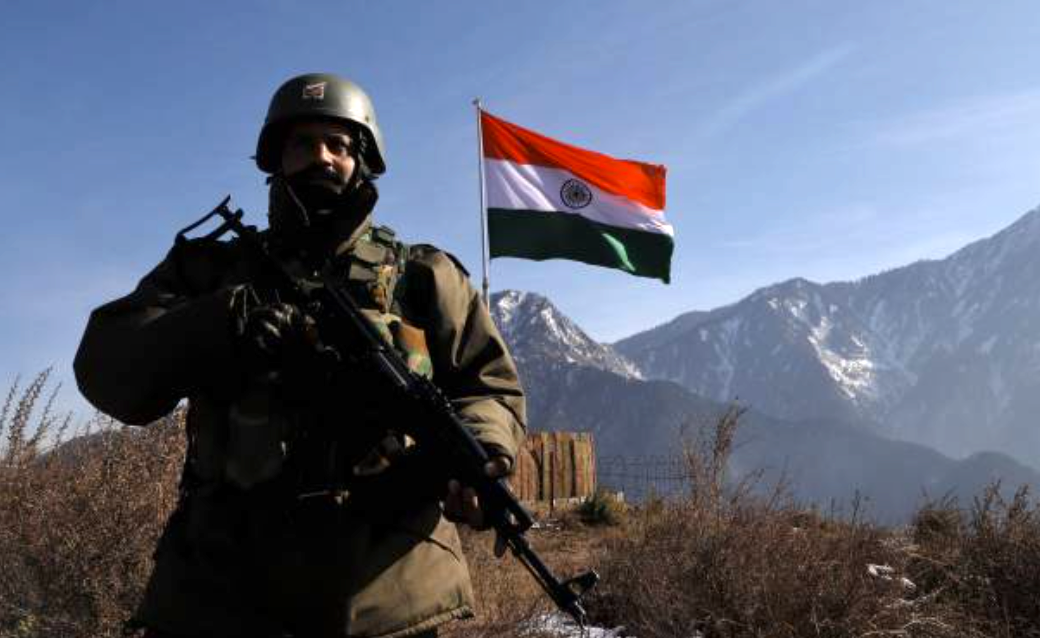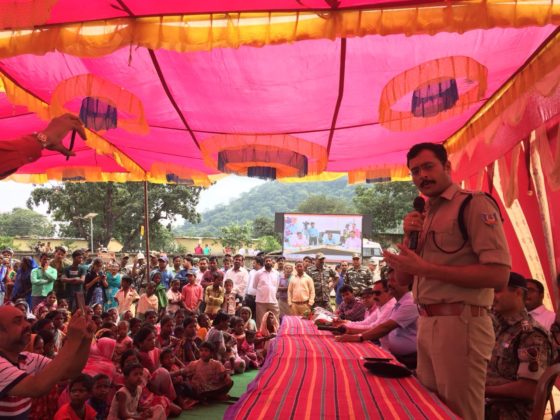 By: Sapna Singh
At a time when Naxals’ influence has been confined to a few pockets in the bordering areas of Jharkhand, police officers deployed in these areas are still finding it difficult to wean villagers from Naxal ideologies, but Government’s developmental policies have instilled hopes into villagers.
The case in point is Sarju, a village situated 130.5 km from Ranchi, which houses hundreds of villagers who were once victims of Naxal attacks.
As Naxalism continues to haunt these villagers, they are struggling to come out of trauma of extortion and torture, meted out to them by the rampaging Maoists.
However, development in these villages, like connecting roads to cities are encouraging villagers to apply for jobs. But there are still fear among some villagers about the influence of Naxalism on their children and youths. “We want employment opportunities in our village. If Government creates such options here, our youth will not get influence with Naxalism,” said a young jobless but educated villager.
By: Sapna Singh
At a time when Naxals’ influence has been confined to a few pockets in the bordering areas of Jharkhand, police officers deployed in these areas are still finding it difficult to wean villagers from Naxal ideologies, but Government’s developmental policies have instilled hopes into villagers.
The case in point is Sarju, a village situated 130.5 km from Ranchi, which houses hundreds of villagers who were once victims of Naxal attacks.
As Naxalism continues to haunt these villagers, they are struggling to come out of trauma of extortion and torture, meted out to them by the rampaging Maoists.
However, development in these villages, like connecting roads to cities are encouraging villagers to apply for jobs. But there are still fear among some villagers about the influence of Naxalism on their children and youths. “We want employment opportunities in our village. If Government creates such options here, our youth will not get influence with Naxalism,” said a young jobless but educated villager.
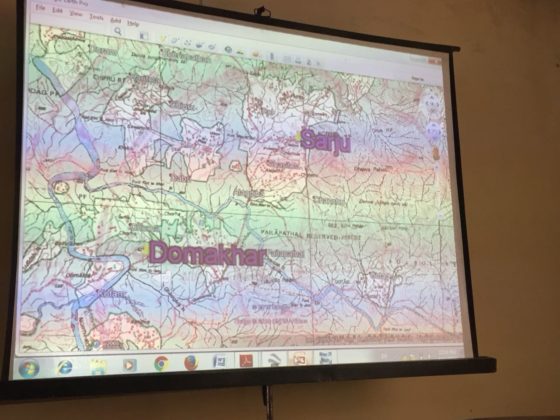 Sarju village panchayat head Taramani Devi said with the fulfillment of basic needs — cooking gas, education to their wards, electricity connections — are some of the reasons for locals lending support to the State Government, however, still lots need to be done for the development.
Jharkhand Chief Minister Raghubar Das said the Government has worked on broad contours of strategy for tackling naxalism. “We have set up new police stations to coordinate with Central forces. We have made the surrender policy attractive; we are not just securing future of surrender people, but, we also provide reward amount to them so that they can invest money. Besides, we have integrated security and development plans,” he said.
CM Das said, “The mineral rich State is lagging behind due to Naxal activities. Our Government’s main aim is to eliminate naxalism. Previous Governments didn’t give focus to development issues; however, in coordination with the Central Government, the BJP Government has made policies favouring tribals and Naxals.”
Explaining about situation of naxalism in nearby areas of Burha Pahar, Latehar and adjoining areas of Sarju village, the Central Armed Forces Police (CAPF) officials said these naxal groups move in group of 40 -50 Dasta (troop) members and the area of movement is Chandwa, Balumath , Herhanj, Latehar, Chatra and Lohardaga border.
Pertinently, seven CRPF jawans were killed in action countering naxals in Latehar district recently.
Enlightening on naxal situation in Jahrakhad, a special team comprising, R K Mallick , Additional Director General of Police (Operation and Law & Order), Saket Kumar Singh, DIG , Special Task Force (STF) and Prashant Anand , Superintendent of Police, Sarju range, said the scenario is changing.
“With the coordination of Central Government, we are able to counter this problem strategically, operations, killings are not tough yet. The challenge we are facing is to break ideology,” said ADGP Mallick.
The Pioneer interacted with surrendered people who once were influenced and cadre of Maoist.
Ganju (name changed), a graduate, shared an incident which turned his life entirely.
“I was politically active and associated with some Chatra Sangathan since my college days in 90s. Our area was deprived and there were no doctors in my village. No water connections were given to us by the Government,” said Ganju, who stays in open jail now with his family.
He said, “I was misguided by Maoist Communist Centre (MCC) party members in college days. They (party people) had told me they are working for our people. “We will create pipeline system to supply water in villages. I treated many people suffering from dengue, chikungunya, and diarrhoea when I was with the MCC.”
“But, later these people used to meet in groups, planned ambush operations and started targeting innocents to rob money and weapons… I decided to leave the party,” he said.
The MCC gave us lecture about Bhagat Singh and Chandrashekhar Azad, said Ganju.
“I took risk with my life but I was determined to leave that practices and was ready to surrender.., I was not much aware about Government policies although, hence I did not ask anyone in my group to come for surrender because this can be a threat for them,” he said.
“And, one day without informing them, I left their group and surrendered. Since then they are searching me,” said Ganju.
His name was in top list of search warrant list of the Jharkhand Police which had announced a reward amount of Rs 25 lakh for his arrest.
“The Jharkhand Government has provided me job, and is paying me Rs 6,000 per month now,” said Ganju.
Meanwhile, STF officials, Jharkhand Jaguar, CAPF said the challenge before them is to crush “Maoist” ideology.
“Circumstances have been changed now, Naxal causalities have been decreases and surrenders are increasing,” said Ashish Batra, IG, Special Task Force (STF).
“There are new formations of new police stations. We do intelligence based anti-naxal operations with the co-ordination between Central forces and State police. There are surrender and reward policies and we are also working on integrated Security and Development Action Plans and most importantly in our seizure of properties under UAPA, these naxals are surrendering,” said Batra.
“Challenges we are facing beside, ideology break are : splinter groups, indulging into criminal activity by Maoists, co-operation from the adjoining states of Bihar, Orissa, Chhattisgarh and West Bengal ,Prosecution and no recycle,” the officer added.
“Efforts are being made to speed up the prosecution process for the under trials help to stop naxals from re-joining their cadre when released on bail,” IG Batra added.
According to the State Government database about Naxals, in Jharkhand 21 out of 24 districts are naxal hit.
Presently out of 30 worst LWE affected districts in the country, 13 are in Jharkhand which include Hazaribargh, Lohardaga, Palamu, Chatra, Garhwa, Ranchi, Gumla, Simdega, Latehar, Giridih, Bokaro, West Singhbhum, Khunti. Saraikela, Kharsawa, East Singhbhum, Dhanbad, Koderma and Ramgarh.
Remarkably, as per naxal database prepared by Jharkhand police, in the seven months of current year (till August), forty encounters take place to deter the naxalite. Interestingly, out of these 40 encounters, 24 naxals were neutralised, including five rewarded naxals while four others rewarded naxals surrendered. Moreover, 38 arrests were made of different ranks.
(The article was first appeared in The Pioneer)
Sarju village panchayat head Taramani Devi said with the fulfillment of basic needs — cooking gas, education to their wards, electricity connections — are some of the reasons for locals lending support to the State Government, however, still lots need to be done for the development.
Jharkhand Chief Minister Raghubar Das said the Government has worked on broad contours of strategy for tackling naxalism. “We have set up new police stations to coordinate with Central forces. We have made the surrender policy attractive; we are not just securing future of surrender people, but, we also provide reward amount to them so that they can invest money. Besides, we have integrated security and development plans,” he said.
CM Das said, “The mineral rich State is lagging behind due to Naxal activities. Our Government’s main aim is to eliminate naxalism. Previous Governments didn’t give focus to development issues; however, in coordination with the Central Government, the BJP Government has made policies favouring tribals and Naxals.”
Explaining about situation of naxalism in nearby areas of Burha Pahar, Latehar and adjoining areas of Sarju village, the Central Armed Forces Police (CAPF) officials said these naxal groups move in group of 40 -50 Dasta (troop) members and the area of movement is Chandwa, Balumath , Herhanj, Latehar, Chatra and Lohardaga border.
Pertinently, seven CRPF jawans were killed in action countering naxals in Latehar district recently.
Enlightening on naxal situation in Jahrakhad, a special team comprising, R K Mallick , Additional Director General of Police (Operation and Law & Order), Saket Kumar Singh, DIG , Special Task Force (STF) and Prashant Anand , Superintendent of Police, Sarju range, said the scenario is changing.
“With the coordination of Central Government, we are able to counter this problem strategically, operations, killings are not tough yet. The challenge we are facing is to break ideology,” said ADGP Mallick.
The Pioneer interacted with surrendered people who once were influenced and cadre of Maoist.
Ganju (name changed), a graduate, shared an incident which turned his life entirely.
“I was politically active and associated with some Chatra Sangathan since my college days in 90s. Our area was deprived and there were no doctors in my village. No water connections were given to us by the Government,” said Ganju, who stays in open jail now with his family.
He said, “I was misguided by Maoist Communist Centre (MCC) party members in college days. They (party people) had told me they are working for our people. “We will create pipeline system to supply water in villages. I treated many people suffering from dengue, chikungunya, and diarrhoea when I was with the MCC.”
“But, later these people used to meet in groups, planned ambush operations and started targeting innocents to rob money and weapons… I decided to leave the party,” he said.
The MCC gave us lecture about Bhagat Singh and Chandrashekhar Azad, said Ganju.
“I took risk with my life but I was determined to leave that practices and was ready to surrender.., I was not much aware about Government policies although, hence I did not ask anyone in my group to come for surrender because this can be a threat for them,” he said.
“And, one day without informing them, I left their group and surrendered. Since then they are searching me,” said Ganju.
His name was in top list of search warrant list of the Jharkhand Police which had announced a reward amount of Rs 25 lakh for his arrest.
“The Jharkhand Government has provided me job, and is paying me Rs 6,000 per month now,” said Ganju.
Meanwhile, STF officials, Jharkhand Jaguar, CAPF said the challenge before them is to crush “Maoist” ideology.
“Circumstances have been changed now, Naxal causalities have been decreases and surrenders are increasing,” said Ashish Batra, IG, Special Task Force (STF).
“There are new formations of new police stations. We do intelligence based anti-naxal operations with the co-ordination between Central forces and State police. There are surrender and reward policies and we are also working on integrated Security and Development Action Plans and most importantly in our seizure of properties under UAPA, these naxals are surrendering,” said Batra.
“Challenges we are facing beside, ideology break are : splinter groups, indulging into criminal activity by Maoists, co-operation from the adjoining states of Bihar, Orissa, Chhattisgarh and West Bengal ,Prosecution and no recycle,” the officer added.
“Efforts are being made to speed up the prosecution process for the under trials help to stop naxals from re-joining their cadre when released on bail,” IG Batra added.
According to the State Government database about Naxals, in Jharkhand 21 out of 24 districts are naxal hit.
Presently out of 30 worst LWE affected districts in the country, 13 are in Jharkhand which include Hazaribargh, Lohardaga, Palamu, Chatra, Garhwa, Ranchi, Gumla, Simdega, Latehar, Giridih, Bokaro, West Singhbhum, Khunti. Saraikela, Kharsawa, East Singhbhum, Dhanbad, Koderma and Ramgarh.
Remarkably, as per naxal database prepared by Jharkhand police, in the seven months of current year (till August), forty encounters take place to deter the naxalite. Interestingly, out of these 40 encounters, 24 naxals were neutralised, including five rewarded naxals while four others rewarded naxals surrendered. Moreover, 38 arrests were made of different ranks.
(The article was first appeared in The Pioneer)


